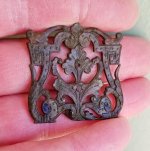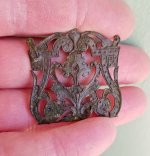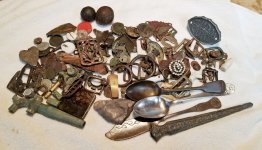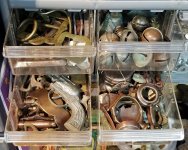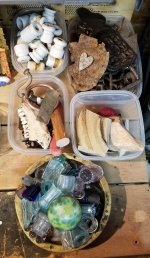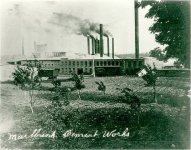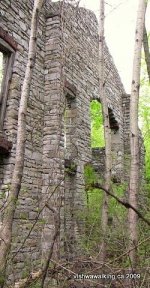I was recently looking through my pile of 'finds that I just can't throw out yet', and realized I have no idea what this is?

I found it years ago on a farm east of Toronto. It's made of brass and shows traces of either enamel or melted blue glass.
Any thoughts regarding date and original use would be appreciated,
Dave



